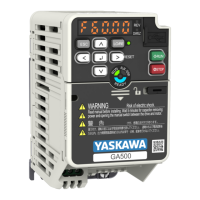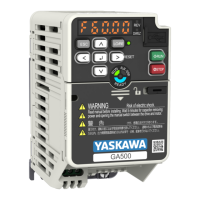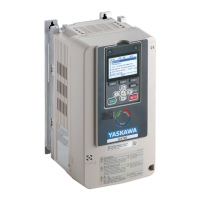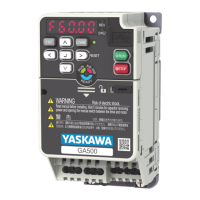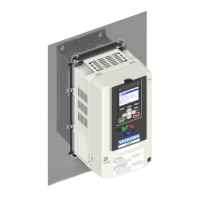35
RS-232 Communication
The following is a quick reference guide for troubleshooting RS-232 communication to the G7 drive. Make a copy of the following pages and
check-off each item as it is completed. For detailed information on the RS-232 standard please refer to EIA RS-232-C or later revision. For
information on the G7 drive RS-232 interface, refer to previous sections of this manual.
1: For RS-232 communication.
1.1: Verify that the correct cable is used to connect the controller to the G7 drive.
1.2: Verify that the controller is set for RS-232 communication and that the communication cable is connected to the correct
communication port.
1.3: Record the controller communications parameters.
Baud Rate
Parity Data Bits Stop Bits 1
1.4: Record the G7 drive’s communication parameters (H5-02, H5-03, H5-07).
Baud Rate
Parity Data Bits Stop Bits 1
1.5: Verify that the communication parameters match.
2: Check the controller RS-232 wiring requirements.
2.1: CTS (Clear to Send)/RTS (Ready to Send) jumper required on the controller end?
2.2: DTR (Data Terminal Ready)/DSR (Data Set Ready)/RLSD (Receive Line Signal Detector) jumper required on the
controller end?
2.3: TXD (Transmit Data)/RXD (Receive Data) connections are made correctly?
3: Send a message from the controller to the G7 drive.
3.1: Connect an oscilloscope between the G7 drive RXD and GND.
3.1.1: Verify that the message pulse train exists and contains the correct number of pulses. Refer to the chapter
Message Formats for information on the message contents.
3.1.2: Verify that the signal levels adhere to the RS-232 standard.
3.2: Insert a data analyzer in the RS-232 circuit and capture the message sent by the controller in a hexadecimal format.
Record the command message below.
[
] [ ] [ ] [ ] [ ] [ ] [ ] [ ] [ ] [ ]
[
] [ ] [ ] [ ] [ ] [ ] [ ] [ ] [ ] [ ]
[
] [ ] [ ] [ ] [ ] [ ] [ ] [ ] [ ] [ ]
[
] [ ] [ ] [ ] [ ] [ ] [ ] [ ] [ ] [ ]

